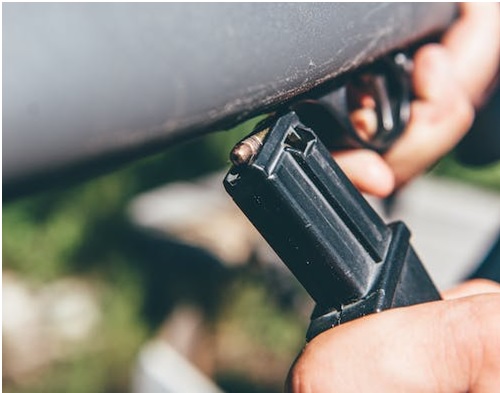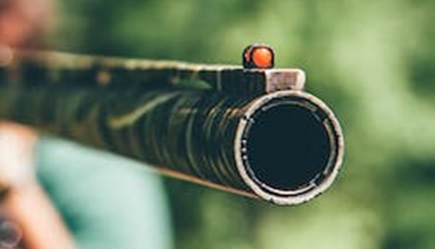Gun Parts and Their Purposes
Apr 11th 2023
All guns have a barrel, lock/action, and either a stock or a frame with grips. Beyond that, there are a whole different load of gun parts, and some are found on many platforms whereas others are not.
With that said, here are some of the most common gun parts, what types of actions they are associated with, and what they do.
- Action: For breech-loading arms, the action is the system that feeds, fires, and extracts the cartridge. Common action types include break action, bolt-action, slide or pump action, semi-automatic or autoloaders (typically gas or recoil operated), and revolvers.
- Barrel: All firearms have a barrel, which traps the expanding gases behind the projectile, propelling it forward. Barrels can be either rifled or smoothbore. Barrel length varies by firearm. The interior of the barrel is called the bore, the end nearest the action the breech, and the other end, from which the projectile exits, the muzzle.
- Stock: The stock consists of the structure of the firearm that provides support or a grip to the shooter and other components. It includes the butt, handle, and grip.
- Frame: Some platforms, like handguns, have frames that accept the other components, including the slide, barrel, grips, and trigger.
- Receiver: The receiver is the part that “receives” all other parts of the firearm, including the stock, barrel, trigger group, and action. It is the part typically serialized.
- Trigger: The trigger engages a part called the sear, which blocks the hammer. When pulled, the trigger releases the sear and hammer/firing pin, enabling the gun to fire.
- Trigger guard: The trigger guard is a loop or bar of metal or plastic that blocks the trigger, serving as a barrier to negligent discharge.
- Hammer: The mechanism that strikes the firing pin, driving it forward into the cartridge’s primer.
- Sear: A component within the trigger assembly which blocks the hammer/striker/firing pin, securing it until the trigger is pulled, which moves the sear out of the way and allows the hammer to fall.
- Firing pin/striker: A component that transfers momentum from the hammer to the cartridge primer, igniting it and the propellant charge. Some models have a firing pin that is integrated with the hammer.
- Magazine: The magazine is a self-contained device which holds cartridges and feeds them into the action under the power of a spring. Magazines can be integrated with a firearm, as in the case of fixed internal and tube magazines, or removable, as in the case of detachable box magazines. All repeating and autoloading arms except revolvers feed from some sort of magazine.

- Magazine well: The area around the base of the magazine chute; oftentimes flared to enable easier feeding.
- Magazine release: a bar, button or lever that, when depressed, disnegages the mag catch and enables the magazine to drop free of the firearm.
- Slide: One some semi-automatic platforms, such as pistols, a metal component that houses the firing pin and extractor, which “slides” under the power of recoil or blowback and which feeds and extracts cartridges.
- Lever: On lever guns, the lever a loop of steel under the trigger, and containing the trigger guard, which is used to manually cycle the action.
- Bolt: On bolt-operated repeaters, the bolt is a steel cylinder that contains the firing pin, extractor, ejector, locking lugs and springs, and which feeds, fires, and ejects cartridges.
- Safety: A button, bar, or sliding mechanism that interrupts the trigger or the action and helps to prevent unintentional discharges. Not all firearms have safeties; where present, crossbolt (on the trigger guard behind the trigger) and tang (on the receiver or stock behind the rear sight) safeties are common.
- Extractor: A hook-like mechanism, integral with the action (typically but not always the bolt or bolt carrier) that removes spent shells from the chamber.
- Ejector: A spring-like mechanism that ejects spent cartridges away from the action once they have been removed by the extractor. Not all firearms have ejectors.
- Cylinder: The “revolving” component of a revolver that contains multiple chambers and houses the cartridges.
- Ejector rod: A manual mechanism on most revolvers enables the operator to extract/eject spent cartridges easily by pushing the rod back towards the cylinder.
- Choke: A gun part that is common on smoothbore shotguns. The choke is a small hollow tube that either restricts shot patterns or allows them to easily open up, allowing the shooter to pattern his shot string appropriately given the intended target. Some shotguns have fixed chokes, others accept threaded, interchangeable chokes.

- Rail: The rail system is a component of the firearm, often integrated with the forend, receiver, or handguard, that contains slots for mounting shooting accessories. Common rail styles include Picatinny, weaver, dovetail, M-LOK and KeyMod style rails.
- Sights: Fixed or adjustable devices that helps the shooter line up the bore with an intended target, assisting with aim. Sights may be iron, but there are also laser, red dot, and telescopic optical sights like scopes. Shotguns typically have a bead in place of front and rear sights.
Visit Our Showroom or Shop Our Website for Gun Parts
SARCO, Inc., carries an exhaustive collection of gun parts, including parts for rare and historically significant firearms like Lee-Enfield, Mosin-Nagant, Mauser, and M1 Garand rifles.
Browse our selection of handgun, shotgun and rifle parts online or in our showroom at 50 Hilton Street in Easton, Pennsylvania.

